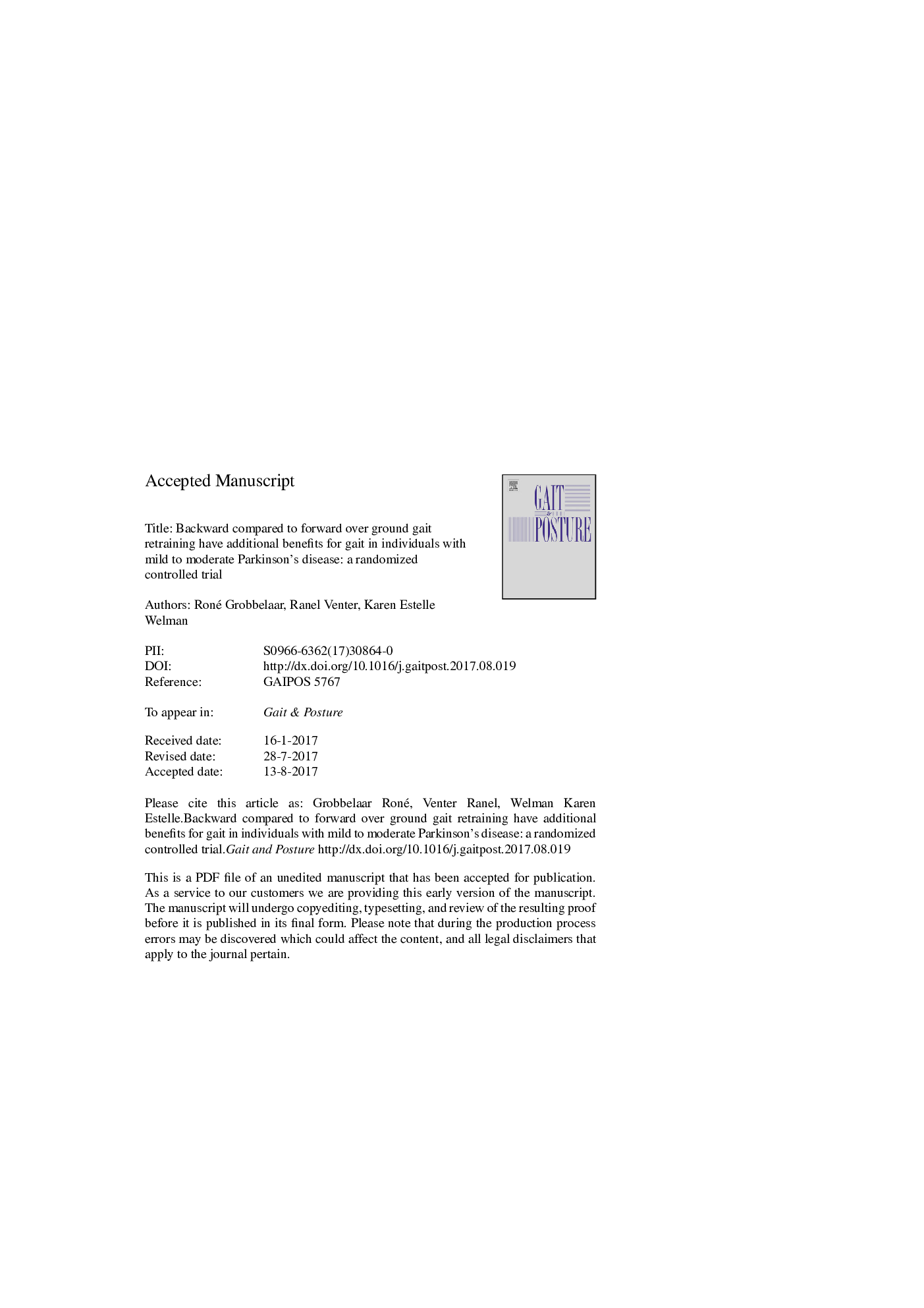| Article ID | Journal | Published Year | Pages | File Type |
|---|---|---|---|---|
| 5707631 | Gait & Posture | 2017 | 23 Pages |
Abstract
Over ground gait retraining in the reverse direction has shown to be beneficial for neurological rehabilitation, but has not yet been investigated in Parkinson's disease (PD). Backwards walking (BW) might be a useful training alternative to improve PD gait and possibly reduce fall risk during complex multi-directional daily activities. The primary aim was to compare the effect of an eight-week forward (FWG) and backwards (BWG) gait retraining program on gait parameters in PD individuals. Twenty-nine participants (aged 71.0 ± 8.8 years; UPDRS-III 38.1 ± 12.3; H&Y 2.7 ± 0.5) were randomly assigned to either the control (FWG; n = 14) or experimental group (BWG; n = 15). Baseline measures included disease severity (UPDRS III), global cognition (MoCA) and depression (PHQ-9). Outcome measures were selected gait variables on the 10m-instrumented-walk-test (i10mWT) assessed before and after the interventions. Both groups improved usual gait speed (FWG: p = 0.03, d = 0.35; BWG: p < 0.01, d = 0.35) and height-normalized gait speed (FWG: p = 0.04, d = 0.35; BWG: p < 0.01, d = 0.57). Additionally, the BWG demonstrated improved cadence (p < 0.01, d = 0.67) and stride length (SL; p = 0.02, d = 0.39). Both interventions were effective to improved gait speed sufficiently to independently navigate in the community.
Related Topics
Health Sciences
Medicine and Dentistry
Orthopedics, Sports Medicine and Rehabilitation
Authors
Roné Grobbelaar, Ranel Venter, Karen Estelle Welman,
